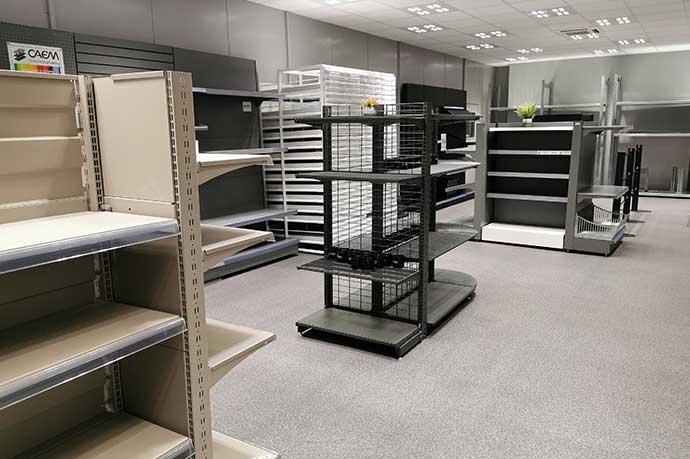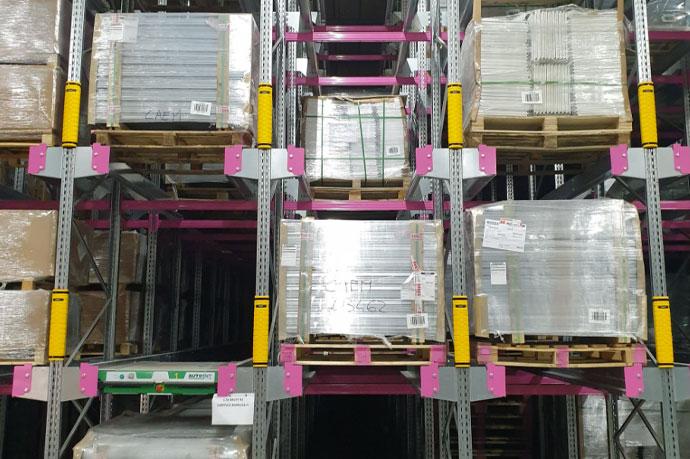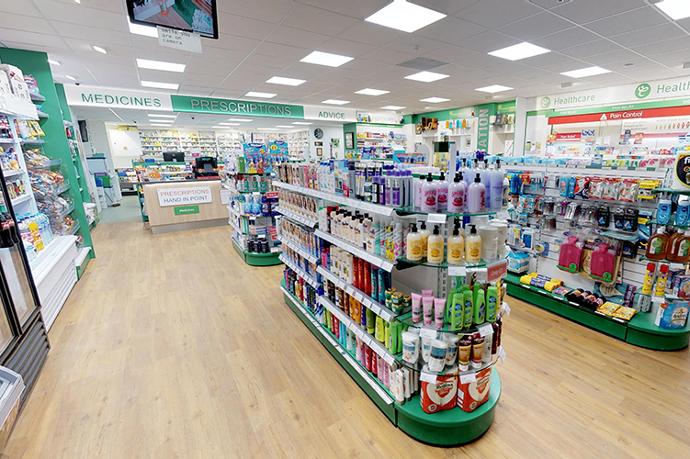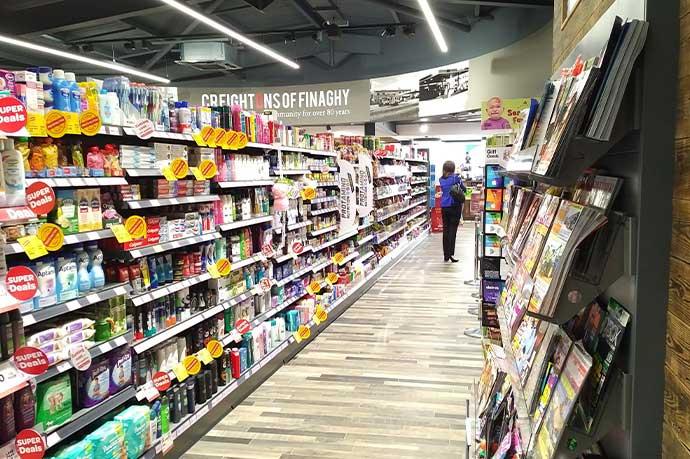Imagine walking into a store that instantly captivates you, where every element seems perfectly placed, guiding you through a seamless shopping experience. This isn't just happenstance – it's the result of expert shopfitting. In today's competitive retail landscape, the art and science of shopfitting can make or break a business. It's not merely about arranging products on shelves; it's about creating an immersive environment that speaks to your brand and entices customers to explore, engage, and ultimately, purchase. Whether you're a boutique owner looking to refresh your space or a retail giant aiming to revolutionize your stores, understanding the power of shopfitting is your key to unlocking retail success. Let's dive into the world of shopfitting excellence and discover how it can transform your retail space into a thriving hub of commerce and customer delight.
Introduction to Shopfitting
Shopfitting is the intricate process of designing, manufacturing, and installing fixtures, fittings, and equipment in retail spaces. It's a crucial aspect of retail design that goes far beyond mere aesthetics. At its core, shopfitting is about creating functional, attractive, and efficient spaces that enhance the shopping experience while maximizing sales potential.
The art of shopfitting encompasses a wide range of elements, from layout planning and lighting design to custom furniture creation and signage installation. It's a discipline that requires a blend of creativity, technical knowledge, and business acumen. A well-executed shopfitting project can dramatically improve foot traffic flow, highlight key products, and reinforce brand identity – all of which contribute to increased customer satisfaction and higher sales figures.
Historically, shopfitting has evolved from simple shelving and counters to sophisticated, technology-integrated environments. Today's shopfitters must consider factors such as digital displays, interactive kiosks, and even augmented reality features that can enhance the in-store experience. They must also be mindful of sustainability, accessibility, and adaptability to future retail trends.
For retailers, investing in professional shopfitting is not just about creating an attractive space; it's about crafting a strategic asset. A thoughtfully designed store can communicate brand values, guide customer behavior, and create memorable experiences that keep shoppers coming back. In an era where online shopping continues to grow, the physical retail environment must work harder than ever to attract and retain customers. This is where expert shopfitting becomes invaluable, turning retail spaces into destinations that offer something unique and compelling.
Comprehensive Analysis of Shopfitting Services
The shopfitting industry plays a crucial role in shaping the retail landscape, with numerous shopfitting companies offering specialized services to create compelling store environments. In recent years, the sector has seen significant growth and evolution, particularly in the UK market where shopfitting companies are known for their innovation and expertise.
Retail
Retail shopfitting is at the heart of creating successful brick-and-mortar stores. As the retail sector continues to face challenges from e-commerce, the importance of creating engaging physical spaces has never been more critical. Shopfitting companies in the UK are at the forefront of this transformation, offering tailored solutions that help retailers stand out in a competitive market.
The global Shopfitting Service market size was valued at USD 1383.9 million in 2023 and is forecast to reach USD 2058.7 million by the end of the forecast period. This substantial growth underscores the increasing demand for professional shopfitting services across various retail sectors. Moreover, the global Shopfitting Service market is expected to grow at a booming CAGR from 2024 to 2032. This projected growth indicates a bright future for shopfitting companies and the retail industry as a whole.
One company making significant strides in the retail shopfitting sector is CAEM. With over 30 years of experience in the UK market, CAEM has established itself as a leader in manufacturing gondola shelving systems. Their approach combines innovative design with state-of-the-art automatic manufacturing, allowing them to quickly transform retailers' requirements into bespoke solutions.
CAEM's product range includes four distinct shelving systems, each designed to meet specific retail needs:
- TN9: A fully modular system built around a versatile upright
- S50: A 50mm compatible shelving solution
- M25: Features a 25mm slotted upright with unique elements like ultra-low base and slim shelves
- Unizinc: A 4-post storage shelving system
These systems offer retailers flexibility and efficiency in their store layouts, crucial factors in today's dynamic retail environment. Additionally, CAEM provides complete furniture programmes, including the D25 modular drawer system for pharmacies and hospitals, demonstrating their versatility across different retail and commercial sectors.
The success of shopfitting companies like CAEM highlights the importance of innovation and customization in retail shopfitting. As UK shopfitting companies continue to push boundaries, they're not just creating store interiors; they're crafting experiences that can help brick-and-mortar retailers thrive in an increasingly digital world.
Modular Shelving Systems
In the world of shopfitting, modular shelving systems have revolutionized the way retailers approach store layouts and product displays. These versatile solutions offer unparalleled flexibility, allowing businesses to adapt quickly to changing trends, seasonal demands, and evolving product lines. At the forefront of this innovation is CAEM, a company with over three decades of experience in manufacturing high-quality gondola shelving systems.
CAEM's expertise in modular shelving is evident in their diverse range of products, each designed to meet specific retail needs while maintaining adaptability and ease of use. Their four primary shelving systems showcase the breadth of options available to modern retailers:
- TN9: This fully modular shelving system is the cornerstone of CAEM's offerings. Built around a unique and versatile upright, the TN9 allows for endless configuration possibilities, making it ideal for retailers who frequently update their store layouts.
- S50: Designed with compatibility in mind, the S50 shelving is 50mm compatible, ensuring it integrates seamlessly with existing store fixtures and fittings. This system is perfect for retailers looking to upgrade their displays without a complete overhaul.
- M25: Featuring a 25mm slotted upright, the M25 system stands out for its space-optimizing design. With unique features like an ultra-low base, slim shelves with hanging EPOS, and central back panels, it maximizes merchandising potential in even the most compact retail spaces.
- Unizinc: As a 4-post storage shelving system, Unizinc offers robust storage solutions for back-of-house areas or retail environments requiring heavy-duty shelving options.
What sets CAEM apart in the modular shelving market is their commitment to customization. With a strong team of designers and state-of-the-art automatic manufacturing capabilities, CAEM excels at converting retailer's requirements into bespoke solutions in a remarkably short time frame. This agility allows retailers to respond quickly to market demands and stay ahead of the competition.
Moreover, CAEM's modular systems are not limited to traditional retail environments. Their D25 modular drawer system, for instance, caters to specialized sectors such as pharmacies and hospitals, demonstrating the versatility of their modular approach across various industries.
The company's advanced automated yet flexible manufacturing facility in the UK, coupled with their Italian counterpart, ensures that CAEM can handle projects of any scale. Whether it's a small boutique or a large-scale retail chain, CAEM's financial stability and manufacturing capacity make them a reliable partner for any retail shopfitting project.
By choosing modular shelving systems from experienced manufacturers like CAEM, retailers can create dynamic, efficient, and visually appealing spaces that enhance the shopping experience while maximizing sales potential. As the retail landscape continues to evolve, the flexibility and adaptability offered by these modular solutions will undoubtedly play a crucial role in shaping the future of retail environments.
The Latest Trends in Shopfitting
The shopfitting industry is constantly evolving, driven by changing consumer behaviors, technological advancements, and shifting retail strategies. As we navigate through an era of rapid change, several key trends are shaping the future of shopfitting and transforming retail spaces.
- Experiential Retail: Modern shopfitting is increasingly focused on creating immersive experiences. Retailers are moving beyond traditional product displays to incorporate interactive elements, sensory experiences, and technology-driven installations that engage customers on multiple levels.
- Sustainability: Eco-friendly shopfitting is gaining traction, with a growing emphasis on sustainable materials, energy-efficient lighting, and recyclable fixtures. This trend not only appeals to environmentally conscious consumers but also helps retailers reduce their carbon footprint.
- Flexibility and Modularity: With the retail landscape in constant flux, adaptable shopfitting solutions are becoming essential. Modular fixtures and easily reconfigurable layouts allow retailers to quickly update their spaces in response to seasonal changes or new product lines.
- Technology Integration: Smart shelving, digital signage, and interactive kiosks are becoming integral parts of modern shopfitting. These technologies enhance the shopping experience while providing valuable data to retailers about customer behavior and preferences.
- Minimalist Design: Clean lines, open spaces, and uncluttered displays are trending in shopfitting. This approach not only creates a sense of calm and luxury but also allows products to stand out more effectively.
Before-and-After scenarios
To truly appreciate the impact of modern shopfitting trends, consider these before-and-after scenarios:
- Traditional Bookstore to Interactive Learning Hub:
- Before: Cramped aisles filled with towering bookshelves, limited seating, and minimal interaction.
- After: Open floor plan with modular shelving, cozy reading nooks, digital kiosks for book previews, and a café area for community events.
- Clothing Boutique Transformation:
- Before: Static mannequins, standard racks, and basic fitting rooms.
- After: Smart mirrors in fitting rooms, customizable lighting to simulate different environments, and touchscreen displays for browsing extended collections.
- Electronics Store Makeover:
- Before: Products locked behind glass cases with limited hands-on experience.
- After: Interactive demo stations, augmented reality product visualizations, and modular displays that can be easily updated for new product launches.
- Grocery Store Reinvention:
- Before: Long aisles of shelving with minimal product information.
- After: Digital shelf labels with real-time pricing and nutritional information, smart shopping carts, and modular produce displays that can be quickly reconfigured for seasonal offerings.
- Pharmacy Redesign:
- Before: Cluttered counters and long wait times for prescriptions.
- After: Self-service kiosks for prescription refills, private consultation rooms with telemedicine capabilities, and modular shelving systems for easy product categorization.
These before-and-after scenarios demonstrate how modern shopfitting can dramatically transform retail spaces, enhancing both the customer experience and operational efficiency. By embracing these trends, retailers can create dynamic, engaging environments that meet the evolving expectations of today's consumers while also future-proofing their spaces for tomorrow's retail landscape.
How to Choose the Right Shopfitter for Your Project
Selecting the ideal shopfitter for your retail space is a crucial decision that can significantly impact the success of your business. With numerous shop fitters available in the market, it's essential to know what to look for to ensure you partner with a professional who can bring your vision to life. Here are key factors to consider when choosing a shopfitter:
- Experience and Expertise: Look for a shopfitter with a proven track record in your specific retail sector. Experienced professionals will have insights into industry-specific requirements and trends.
- Portfolio and References: Review their past projects and ask for references. This will give you a clear idea of their style, quality of work, and ability to meet client expectations.
- Design Capabilities: A skilled shopfitter should offer creative design solutions that align with your brand identity while maximizing space efficiency and customer flow.
- Project Management Skills: Ensure they have strong project management capabilities to deliver on time and within budget.
- Compliance and Certifications: Verify that the shopfitter is familiar with local building codes and regulations, and holds necessary certifications.
- Technology Integration: In today's digital age, choose a shopfitter who can seamlessly incorporate technology into your store design.
- Sustainability Practices: If eco-friendliness is important to your brand, look for a shopfitter who specializes in sustainable materials and energy-efficient solutions.
- Communication and Collaboration: Select a shopfitter who values clear communication and is willing to collaborate closely with you throughout the project.
- After-Sales Support: Consider the level of support offered after project completion, including maintenance and future modifications.
- Cost and Value: While budget is important, focus on the value provided rather than just the lowest price. A skilled shopfitter can often save you money in the long run through efficient design and quality workmanship.
Installation Services
The installation phase is a critical component of any shopfitting project. When evaluating a shopfitter's installation services, consider the following aspects:
- In-House vs. Subcontracted Teams: Determine whether the shopfitter uses their own installation team or subcontractors. In-house teams often provide more consistent quality and better coordination.
- Scheduling Flexibility: Look for a shopfitter who can work around your business hours to minimize disruption, especially for renovation projects.
- Project Timeline: Ensure they can provide a detailed timeline for the installation process and have a track record of meeting deadlines.
- Quality Control Measures: Inquire about their quality assurance processes during installation to ensure everything is set up to specification.
- Safety Protocols: Verify that they adhere to strict safety standards to protect both their workers and your property during installation.
- Equipment and Tools: A professional shopfitter should have access to the latest tools and equipment necessary for efficient and precise installation.
- Problem-Solving Abilities: Ask about their approach to handling unexpected issues that may arise during installation.
- Clean-Up and Handover: Discuss their procedures for site clean-up and the final handover process, including any training on new systems or fixtures.
- Warranty and After-Installation Support: Inquire about warranties on their work and what kind of support they offer post-installation.
- Compliance Documentation: Ensure they provide all necessary documentation proving compliance with building codes and regulations upon completion.
By carefully considering these factors, you can select a shopfitter who not only understands your vision but also has the skills and resources to execute it flawlessly. Remember, the right shopfitter is not just a service provider but a partner in creating a retail space that enhances your brand and drives business success.
What is shopfitting in construction?
Shopfitting in construction refers to the specialized process of designing, fabricating, and installing fixtures, fittings, and equipment in retail spaces. It's a crucial aspect of commercial construction that goes beyond basic building work to create functional and aesthetically pleasing environments for businesses to showcase and sell their products or services.
In the context of construction, shopfitting encompasses several key elements:
- Space Planning: Shopfitting begins with a detailed analysis of the available space and the creation of a layout that maximizes efficiency and customer flow. This involves considering factors such as product placement, traffic patterns, and point-of-sale locations.
- Custom Fabrication: A significant part of shopfitting involves the creation of bespoke fixtures and fittings tailored to the specific needs of the retail space. This can include display units, counters, shelving systems, and other specialized furniture.
- Interior Finishes: Shopfitting often includes the selection and application of interior finishes such as flooring, wall coverings, and ceiling treatments that align with the brand's aesthetic and functional requirements.
- Lighting Design: Proper illumination is crucial in retail environments. Shopfitting incorporates the design and installation of lighting systems that enhance product displays and create the desired ambiance.
- Signage and Branding: The integration of brand elements, including signage, logos, and color schemes, is a vital component of shopfitting in construction.
- Technology Integration: Modern shopfitting often involves the incorporation of technological elements such as digital displays, interactive kiosks, and point-of-sale systems.
- Compliance and Safety: Shopfitters must ensure that all installations meet building codes, safety regulations, and accessibility requirements.
- Sustainability Considerations: With increasing focus on environmental responsibility, shopfitting in construction now often includes the use of eco-friendly materials and energy-efficient designs.
- Project Management: Shopfitting requires coordinating various trades and suppliers, often working within tight timelines to minimize disruption to business operations.
- Adaptability: In today's fast-paced retail environment, shopfitting solutions often need to be flexible and easily modifiable to accommodate changing product lines or seasonal displays.
Shopfitting in construction is a specialized field that requires a blend of design creativity, technical knowledge, and practical construction skills. It plays a pivotal role in translating a brand's vision into a physical retail environment that not only looks appealing but also functions efficiently to drive sales and enhance customer experience.
For businesses undertaking new construction or renovation projects, understanding the scope of shopfitting is crucial. It's not just about building a space; it's about creating an environment that reflects the brand, engages customers, and supports the operational needs of the business. As such, shopfitting is an integral part of the construction process for any retail or commercial space, requiring careful planning and execution to achieve optimal results.
What is the description of shopfitting?
Shopfitting is a multifaceted discipline that encompasses the art and science of creating functional, attractive, and efficient retail environments. At its core, shopfitting involves the design, manufacture, and installation of fixtures, fittings, and equipment that transform empty commercial spaces into vibrant, engaging retail outlets. This process goes far beyond mere decoration, integrating elements of interior design, architecture, and retail psychology to craft spaces that not only look appealing but also drive sales and enhance the overall customer experience.
A comprehensive description of shopfitting includes several key aspects:
- Strategic Space Planning: Shopfitting begins with a meticulous analysis of the available space, considering factors such as customer flow, product visibility, and operational efficiency. This involves creating floor plans that maximize the use of space while ensuring a logical and intuitive layout for shoppers.
- Brand Integration: A crucial element of shopfitting is the seamless incorporation of brand identity into the physical space. This includes color schemes, logos, signage, and overall aesthetic that aligns with the brand's values and target audience.
- Custom Fixture Design: Shopfitting often involves the creation of bespoke display units, counters, and shelving systems tailored to the specific needs of the retailer and their products. These custom elements are designed to showcase merchandise in the most appealing and practical manner.
- Lighting Solutions: Effective shopfitting incorporates sophisticated lighting design to highlight products, create ambiance, and guide customers through the space. This can include a mix of ambient, accent, and task lighting to achieve the desired effect.
- Material Selection: Shopfitters carefully choose materials for flooring, wall coverings, and fixtures that not only look attractive but also withstand the wear and tear of daily retail operations. This selection process considers durability, maintenance, and aesthetic appeal.
- Technology Integration: Modern shopfitting often includes the incorporation of digital elements such as interactive displays, digital signage, and advanced point-of-sale systems to enhance the shopping experience and streamline operations.
- Compliance and Accessibility: A critical aspect of shopfitting is ensuring that all designs and installations comply with local building codes, safety regulations, and accessibility standards. This includes considerations for fire safety, emergency exits, and accommodations for customers with disabilities.
- Sustainability: With growing environmental awareness, shopfitting now often incorporates eco-friendly materials, energy-efficient lighting, and sustainable design practices to reduce the environmental impact of retail spaces.
- Flexibility and Adaptability: Given the dynamic nature of retail, shopfitting solutions often need to be flexible, allowing for easy reconfiguration of spaces to accommodate changing product lines, seasonal displays, or evolving retail strategies.
- Project Management: Shopfitting involves coordinating various aspects of design, manufacturing, and installation, often within tight timelines. Effective project management is crucial to ensure all elements come together seamlessly and on schedule.
- Sensory Considerations: Beyond visual appeal, shopfitting also takes into account other sensory elements such as acoustics, scent, and tactile experiences to create a holistic and immersive retail environment.
- Budget Optimization: Skilled shopfitters work to maximize the impact of available budgets, balancing aesthetic desires with practical constraints to deliver the best possible outcome within financial parameters.
In essence, shopfitting is a comprehensive process that transforms empty commercial spaces into dynamic retail environments. It requires a blend of creativity, technical expertise, and strategic thinking to create spaces that not only look impressive but also function effectively to support the retailer's business objectives. Whether for a small boutique or a large department store, shopfitting plays a crucial role in shaping the physical manifestation of a brand and influencing the overall success of a retail venture.
What is the meaning of store fittings?
Store fittings, a crucial component of shop fitting, refer to the various fixtures, furniture, and equipment used to display, store, and organize merchandise within a retail environment. These elements are essential in creating a functional and visually appealing space that enhances the shopping experience and maximizes sales potential.
The term "store fittings" encompasses a wide range of items, including:
- Display Units: These can be shelving systems, gondolas, or custom-built fixtures designed to showcase products effectively. They come in various materials and styles to suit different store aesthetics and product types.
- Counters and Cash Wraps: These are typically the focal points for transactions and customer service. Modern store fittings often integrate technology seamlessly into these areas for efficient point-of-sale operations.
- Mannequins and Bust Forms: Essential for clothing retailers, these fittings help customers visualize how garments look when worn.
- Hanging Systems: Including garment rails, wall-mounted systems, and freestanding units for displaying clothing and accessories.
- Storage Solutions: Back-of-house fittings like stockroom shelving and inventory management systems are crucial for efficient operations.
- Lighting Fixtures: While not always considered traditional fittings, specialized retail lighting is integral to creating ambiance and highlighting products.
- Signage and Graphics: Including price tags, promotional displays, and wayfinding elements that guide customers through the store.
- Seating Areas: Fitting rooms, waiting areas, and try-on spaces are important fittings in many retail environments.
- Security Fittings: Such as anti-theft devices, mirrors, and display case locks to protect merchandise.
- Modular Systems: Flexible fittings that can be easily reconfigured for changing displays or seasonal needs.
The importance of store fittings in shop fitting cannot be overstated. They serve several critical functions:
- Product Presentation: Well-designed fittings showcase merchandise in the most appealing way, encouraging purchases.
- Space Optimization: Efficient store fittings maximize the use of available space, allowing for better product organization and customer flow.
- Brand Identity: Custom fittings can be designed to reflect a brand's aesthetic and values, reinforcing brand identity within the physical space.
- Customer Experience: Thoughtfully chosen fittings can enhance the overall shopping experience, making it more enjoyable and convenient for customers.
- Operational Efficiency: The right fittings can streamline store operations, from inventory management to the checkout process.
When selecting store fittings, retailers and shop fitters must consider factors such as durability, flexibility, aesthetics, and functionality. The choice of materials, finishes, and designs should align with the overall store concept and target demographic. Additionally, fittings must comply with safety regulations and accessibility standards.
In the evolving retail landscape, store fittings are also adapting to incorporate technology and sustainability. Digital displays, interactive kiosks, and eco-friendly materials are becoming increasingly common in modern shop fitting projects.
Ultimately, the meaning of store fittings extends beyond mere furniture or equipment. They are strategic tools that, when chosen and implemented wisely, can significantly impact a store's success by creating an environment that attracts customers, showcases products effectively, and facilitates smooth operations. As such, store fittings are a fundamental aspect of shop fitting that requires careful consideration and expertise to implement successfully.





